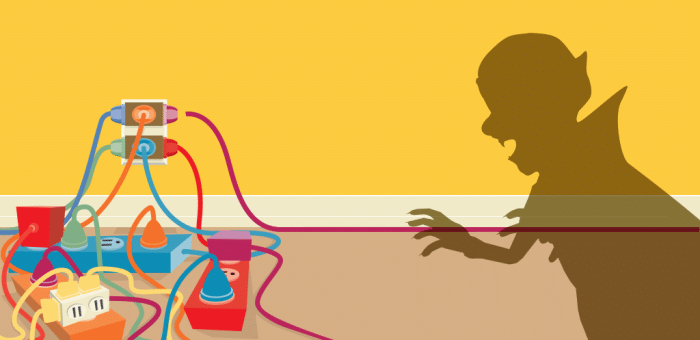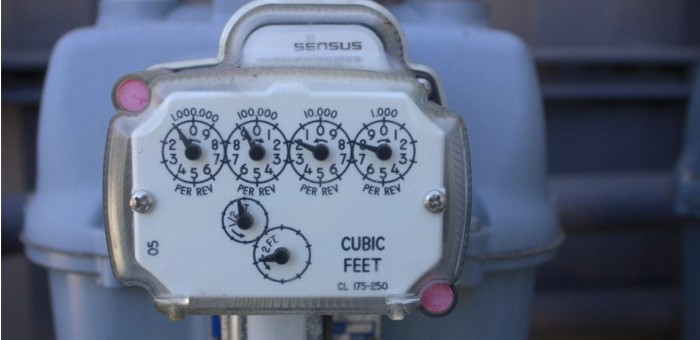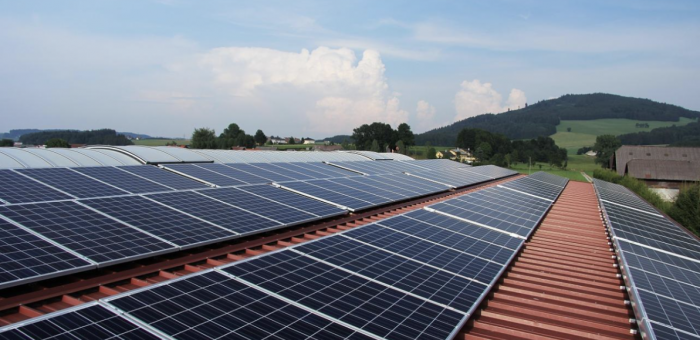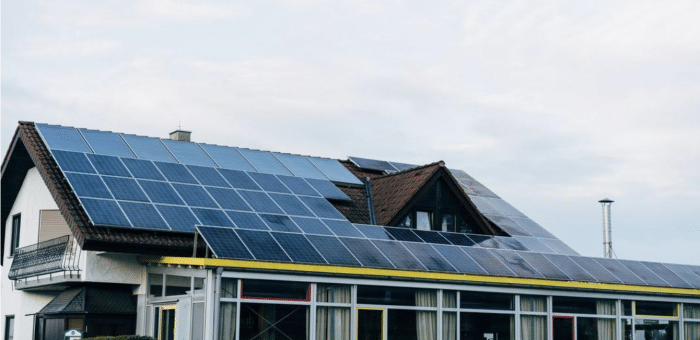Tracking your appliance energy usage is key to reducing your overall energy usage. If you find that your bills are drastically higher than your estimated costs, it could be that your energy provider is tacking on far more fees than you realized, meaning it’s probably time to shop for a new provider.
Another issue you might discover is that you’re using more electricity than you thought. Even though you may have started taking steps to become more energy-efficient, your home is still gobbling up power. However, using only the knowledge of your whole home electricity usage, you may not be able to pinpoint the problem’s source(s). Instead, why not try monitoring the energy usage of specific appliances?
Click on a section to skip directly to it:
Why you should monitor appliance energy usage in your home
Knowing your home energy usage provides some significant benefits:
- It allows you to estimate your monthly power consumption.
- You can estimate the approximate cost of your average home electricity usage — although this is more difficult with a variable-rate plan.
- You avoid unpleasant surprises when your power bill arrives.
However, as mentioned above, monitoring your whole-home energy usage won’t help you identify specific issues. That’s where tracking individual appliances comes in. With this information, you’ll be able to:
- See how much electricity each appliance pulls.
- Determine if it’s time to replace an appliance.
- Reduce your energy consumption and your electricity bills.
The best way to track energy usage of household appliances
Now let’s look at how to track how much electricity your household appliances use.
Estimate the number of hours a single appliance is running
Before calculating an appliance’s daily, monthly, or even annual electrical use, you first need to know how long it runs every day. One way to do this is by roughly estimating how many hours it runs. For instance, you know you watch television or use your home computer for a set number of hours every day. Your refrigerator might be a bit trickier — it’s always “on” — but generally, most fridges run for up to eight hours daily.
Your other option for estimating an appliance’s daily energy use is to keep a log. Every time you use your microwave, oven, or gaming console, write down how long it ran. While more tedious, this method may provide more accurate calculations.
Determine the maximum wattage of the appliance
One of the easiest ways to determine the maximum wattage of a given appliance is to check the appliance itself — usually found on a sticker on the appliance’s backside or bottom. You may also find the information in the owner’s manual.
Instead of a maximum wattage, some manufacturers use amperes (amps) to display an appliance’s electrical current draw. To estimate the wattage of a given device, multiply its amps by the voltage it uses. Most small appliances use 120 volts, while larger ones (like a central air conditioner, stove, and level 2 EV charger) use 240 volts.
If you can’t find either number, you can also check online by looking up your specific appliance.
Calculate daily energy consumption
After gathering the above data for the appliance(s) you want to monitor, it’s time to start calculating. Here’s how to measure electricity usage by an appliance:
(Wattage X hours per day used) / 1000
The result will tell you how many kilowatt-hours an appliance uses daily. Suppose your work laptop uses 65 watts, and you use it for eight hours a day. Your calculation would look like this:
(65W X 8 hours) / 1000
(520) / 1000 = 0.52 kilowatt-hours/day
If you want to find the cost of using your laptop — or any other appliance in your home — you would then multiply the kilowatt-hours by your electricity rate. For instance, if you’re on a fixed-rate plan with a $0.12 rate, your device would cost about $0.06 per day.
Calculate annual energy consumption
To project an appliance’s annual electricity consumption, use this formula:
Daily kilowatt-hour use X the number of days per year used
Using the same example from above, let’s say you work Monday through Friday. In general, there are about 260 workdays in a year. If you get — and use — two weeks of vacation time, that’s 250 days that you use your laptop. Here’s how to calculate its annual energy consumption:
0.52 kilowatt-hours per day X 250 days = 130 kilowatt-hours/year
Again, if you want to calculate the cost, multiply your annual consumption by your electricity rate. In this case, your laptop would cost $15.60 per year to run.
Electrical appliances in your home to monitor
In general, you can monitor any appliances that you want. However, this can be a tedious process. You could invest in an electricity usage monitor to make the process easier. Whole-home monitors typically attach to your electrical panel. While most only track the energy consumption of your entire house, some allow for individual device monitoring. However, they may not track your smaller devices.
A better alternative for individual appliance monitoring would be an energy monitor plug. You plug it into your wall outlet and plug the device you want to check into it. While their features vary, some energy monitor plugs will calculate a device’s daily, weekly, and yearly energy usage and its cost to use.
Whether you track your appliances manually or with an energy monitor, here are a few of the ones you should keep a close eye on.
Air conditioner
Of all of a home’s appliances, the central air conditioning unit tends to use the most electricity. Tracking its usage and making adjustments to make your home more energy-efficient allows you to see the effectiveness of your efforts. At the same time, it can help you identify issues if your consumption suddenly starts increasing. Addressing those issues right away can help you avoid unnecessarily high energy bills and the need to replace your air conditioner before it’s time.
Electric toaster ovens
A toaster oven is more space- and energy-efficient than a conventional oven. Tracking its usage can show you just how much less energy it pulls. However, it does use more than other smaller kitchen appliances, like a standard toaster or coffee maker. Like many other smaller kitchen appliances, it also draws phantom energy. Unplugging it when you aren’t using it can help you estimate its usage and cost more accurately.
Washers and dryers
Washers and dryers pull quite a bit of energy, especially when you use hot water and high heat. Monitoring their use can help you determine how efficient they are and if you should swap them out for newer, more efficient models.
Let us find you the best electricity plan in seconds and start saving.
Monitor your electricity usage for optimal efficiency
Don’t let your appliances get the best of you. Knowing how to monitor electricity usage in the home by appliance can help you better understand your energy consumption habits, estimate your energy costs, and take steps to lower both. It can help you decide if you should replace specific devices with more energy-efficient models. In some cases, it can even help you determine if it’s time for a new energy plan.
If your current energy plan costs you more than you thought, Power Wizard is here to help. With us, you can compare dozens of electricity plans and companies in one place and choose the plan that fits your needs within minutes.
Are you ready to get started? Visit Power Wizard today!
More From the Power Wizard Blog
-
Affordable Electric Bill: Power Wizard’s Promise of Protection
Sarah, a proud Texan, knows that everything is bigger in Texas – including the choices when it comes to electricity providers. She’s no stranger to the complexities of deregulated energy markets. With a bustling household, she juggles work, family, and keeping the lights on. But there’s one thing Sarah doesn’t want to juggle: her electric bill. […]
View Article -
Vampire Energy: How Phantom Power Drains Your Wallet and the Environment
Imagine your home filled with silent energy sippers, lurking in the shadows, unnoticed yet constantly draining power and your wallet. Vampire energy, or phantom load, refers to the electricity electronic devices consume, even when turned off or in standby mode. These energy vampires are prevalent in every household and workplace, from the charger left plugged […]
View Article -
The Top Sources of Carbon Emissions in the U.S.
Climate change due to rising global temperature seriously threatens the natural ecosystem. It can result in erratic weather featuring intense drought, heat waves, melting ice caps, warming oceans, and increased storms when left unchecked. As the impact of climate change worsens, the risk of biodiversity loss and human extinction gets bigger. Table of Contents What […]
View Article -
California Solar Tax Credit & Incentives for Residential Rooftop Solar
Are you considering investing in residential solar panels in California? You’re not the only one. Research shows that California was ranked number one out of 50 states in 2022 for solar power generation, with more than 11 million homes powered by the sun. A major reason why solar power is popular statewide is that prices have dropped […]
View Article -
What Should You Include in an Energy Efficiency Audit?
Rising energy costs mean higher electricity bills, and for the average homeowner or business, a little savings each month can add up to extra cash at the end of the year. If you’re looking for ways to reduce your home’s energy consumption, performing a home energy audit is a great place to start. Table of […]
View Article -
How to clean your solar panels
Click on a section to skip directly to it: Why is it important to clean your solar panels?Solar panel cleaning: a step-by-step breakdownMake sure you’re saving the most on your monthly energy bill Have you considered installing a renewable energy source at your home? Power Wizard recommends trying solar energy, which accounts for 3% of […]
View Article -
How to Reduce Your Carbon Emissions
Click on a section to skip directly to it: Why is it necessary to lower carbon emissions?Steps to take to minimize your carbon emissionsReduce your carbon emissions with carbon offsets Carbon emissions refer to the measure of the impact of human activities on global warming and climate change. Every person on the planet contributes, directly […]
View Article -
Solar Energy Credits: Everything You Need to Know
Solar panels are a great way to save money. They are energy efficient and reduce the impact of electricity production on the environment. You can get them installed on the roof of your house to reduce your reliance on the electric grid. Once installed, solar panels help passively produce energy from the sunlight — as […]
View Article













